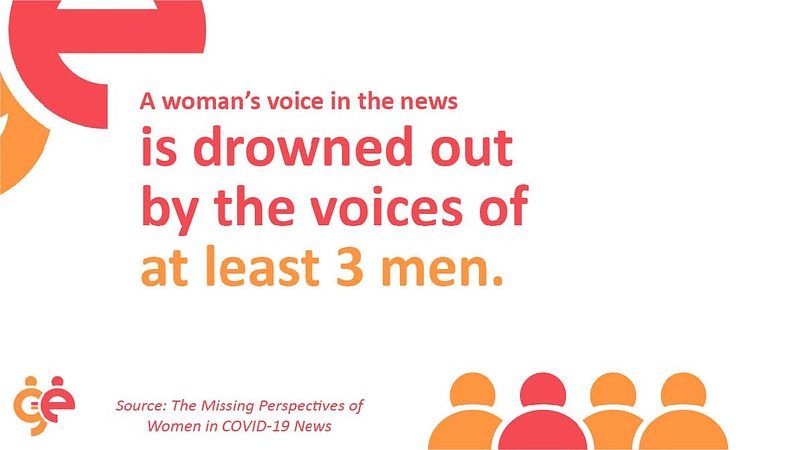In 2021, African journalists faced several challenges such as arbitrary attacks and arrests, increased digital proliferation and disinformation.
frayintermedia spoke to South African journalism educator and researcher Dr Marenet Jordaan, Namibian journalist Tuyeimo Haidula, Kenyan International Center for Journalists (ICFJ) African Women Journalists project director Catherine Chiberu and South African journalism researcher Professor YIva Rodny-Gumede.
As Rodny-Gumede said, with journalism in a crisis, journalists working in a fast-changing and competitive environment cannot remain rigid.
The improvement in skills and more localised content is paramount. Jordaan believes while a more tailored engagement with audiences is also important to improve the growing demands of a digitised media environment.
More tailored and localised content
International Center for Journalists (ICFJ) Africa Women Journalism Project director Catherine Gicheru said African journalism must develop new and innovative products and services to meet the needs of an audience.
“Are we providing our audiences with the information they require … (and) how can we better share our content with our audience?” she asked.

In a technology-led world, an audience can easily feel overwhelmed and disengage with media reports because there is too much information. This calls for more audience tailored and localised content.
“My impression is that it is not the number of clicks you get that counts; it is the nature and quality of audience engagement that give a news institution or publication the edge,” said Stellenbosch University journalism lecturer and researcher Jordaan.
“Perhaps the time has come for small newsrooms to focus their attention away from competing with larger news outlets, to once again put their reader/viewer at the centre of their reporting process. For example – a local paper or news website should not be chasing big national news stories; they should rather be telling the stories of their own community in a way that appeals to that specific group of people.”
Entrepreneurial journalism has grown in Africa fundamentally changing how journalism produces and distributes news.
Media Innovators and collaborations have transformed news consumption and audience engagement by tapping into messaging platforms to connect with audiences by harnessing the benefit of tech power to serve communities characterised by high data costs.
The Continent is a unique weekly publication which has deployed the same viral networks exploited by disseminators of disinformation in order to counter the fake news circulating on WhatsApp. The Continent does this by distributing a low resolution PDF weekly issue about WhatsApp but focusing on accuracy.
In Ethiopia, Tikvah Ethiopia, a Telegram based news platform has maximised the platform’s popularity in Ethiopia to engage a wide audience and is now Ethopias biggest and trusted social media news outlet.

The ICFJ’s Gicheru said it’s those innovations that improve engagement and will ensure good journalism remains viable beyond 2022.
“Innovating how we do our work and how we can create more engaged audiences and communities will go a long way toward ensuring the long-term viability of our work. Are there any gaps in our coverage that exclude certain segments of our society or communities?” she said.
According to What’s New In Publishing, 5G and the new Wi-Fi 6 standard will enable faster connection which is crucial if the world is to embrace new digital trends. This means more audiences are expected to have connectivity and embrace electronic media and digital transformations in the information space.

Mental health capacity-building
Journalism and journalists are under threat on various levels: from job security, the economic crisis, polarisation of the media, the relentless news cycle, growing attacks against journalists including physical abuse and incarceration for their reporting, and cyber-attacks as well as social media trolling amongst others.
According to media experts, these have worsened in recent years putting the mental health – and work – of media practitioners under strain.
In a high-pressure media environment with compounded challenges and increased expectations on journalists, Jordaan stressed that capacity building for contemporary journalists is crucial.
“Journalism students have to be prepared to enter an industry fraught with potential dangers to their physical and mental wellbeing,” she said.
These stresses come from various places, including the public, officials and sources when entering the reporting field.
“More attention should be paid to equipping aspiring and upcoming journalists with the skills they need to cope with stress, anxiety, burnout and depression. The need for upskilling journalists to be more resilient has become even more pressing since the dawn of Covid-19.”
Strengthening women’s narratives
“This alarming marginalisation is clear in all areas of the news media: women are underrepresented in newsroom leadership, gender equality stories are going untold, and men remain the vast majority of quoted experts and sources,”
The Missing Perspective of Women in COVID-19 News
Safety remains a growing concern for journalists particularly women who have seen threats of violence escalate over recent years as social media is increasingly used as a tool of intimidation.
A 2021 UNESCO report found that 73% of women respondents said they had experienced online violence.
“Women’s voices continue to be underrepresented in the global news media,” the report said.
“This alarming marginalisation is clear in all areas of the news media: women are underrepresented in newsroom leadership, gender equality stories are going untold, and men remain the vast majority of quoted experts and sources,” read the report.
Dealing with gender issues is also becoming more important.

Gicheru argued that “we need to rethink our approach to content and ensure that we are not ignoring women’s voices and issues. Being gender positive is more than just a way of thinking; it also allows businesses to reach out to new audiences who are currently underserved.” she said.
Solution journalism
Solutions journalism is another area that is set to become more important in the future.
In 2021 a great focus was on the science of COVID-19, however Namibian journalist Tuyemo Haidula said in 2022 stories that will matter are those with a high social impact.
“These should be rigorous reports about how people are responding to social problems. The focus should be on stories that showcase how people are solving – or attempting to solve problems,” she said.
Solution-based reporting can provide insights into how Africa addresses the health, sociocultural, and civic needs of its diverse populations.
“African journalism should bridge the gap: promoting community development by enhancing and sustaining citizen journalism on the continent […] harness the power of citizen journalism to build sustainable communities and gather stories that reflect the realities of various communities across Africa,” Haidula said.


